Spider Creates Fake Spider Using Trash
This topic had been published extensively over the past 3 years when some specimens of Cyclosa in Peru were observed to be building trashlines in multiple directions and had the topic revisited again last year with further studies and observations. These spiders are actually very common, and we do not need to visit the Peruvian jungles to witness such spidery artistry when it exists right in our own home, Singapore.
Trashline orb web spider (Cyclosa sp.)
The detritus is built along the radiating lines of the spider’s orb web, and more is collected in between. The radiating line of trash usually goes upwards, but it seems like this trait can vary a lot, and sometimes they resemble a larger spider.
Trick predators into seeing a much larger spider
Sounds logical to make oneself look bigger and more difficult to overcome. This has been observed in other genera such as Argiope, which builds a stabilimentum to extend its legs.
Destruction prevention
Putting an obvious mark on the web makes it obvious to mammals that could easily destroy the web by walking into it.
Lure for similar prey
Since the trashline is partly built using the carcasses of the spider’s prey, they might produce a scent that attracts others of the same kind. Free food for the spider! A similar theory was presented in a separate post for the ant-snatching assassin bug that carries the ant carcasses on its back.
Attracting mates
Currently a baseless theory. A larger trashline might just be able to increase the chances of attracting a mate!
Distract food-stealers
If the spider happens to be away, perhaps this fake sculpture of a spider wards off food-stealers (e.g. Argyrodes sp.), like a scare crow?
Camouflage
The actual location of the spider is not as obvious with so much trash on the web, fooling both potential predator and prey.
Huntsman spider (Sparassidae)
At first, I thought the radiating trashlines were like the legs of a freshly moulted spider since they only radiated in one general direction. However, their legs are always pointing downwards while the trashlines are directed upwards more often than not.
Tree-stump orb web spider (Poltys sp.)
Then I realized that it simply resembles any larger orb web spider from the same family – they typically rest in the middle of the orb web with legs spread apart along the radiating lines of silk.
Trashline orb web spider (Cyclosa sp.)
Wider view from the other side of the web. The actual spider now looks much smaller and not even noticeable.
Trashline orb web spider (Cyclosa sp.)
View of the spider and its trashlines from the side.
Trashline orb web spider (Cyclosa sp.)
This is how a typical “trashline” looks like, with just a single line with the spider in the center.
Trashline orb web spider (Cyclosa sp.)
Notice that a gap breaking the trashline remains so that the spider can slot itself in comfortably to complete the trashline.
Trashline orb web spider (Cyclosa sp.)
Sometimes, the trashline only goes up in a single direction. I have never seen one that only goes down though.
Trashline orb web spider (Cyclosa sp.)
The trashline can also be very thick at times! In this case, the trashline could be the egg sac of the spider.
Trashline orb web spider (Cyclosa sp.)
Not all spiders in the genus will build a trashline though. This one creates a swirly pattern to make you dizzy! @_@
Trashline orb web spider (Cyclosa sp.)
Last but not least, is the one that creates an abstract masterpiece. Yes, it needs to be appreciated.

What is this decoy for?
The reason for constructing these decoys is not certain, but there are many theories for creating these spidery illusions.
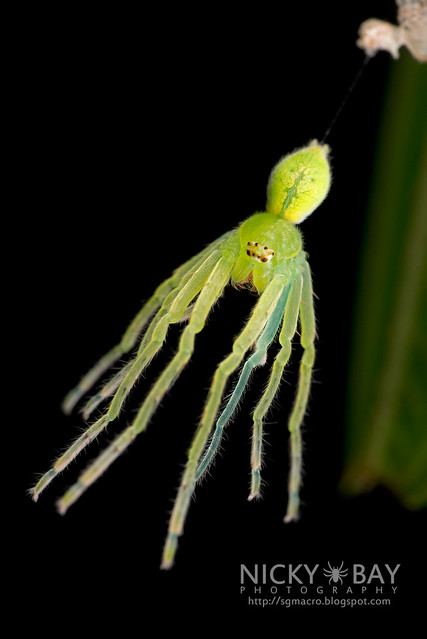

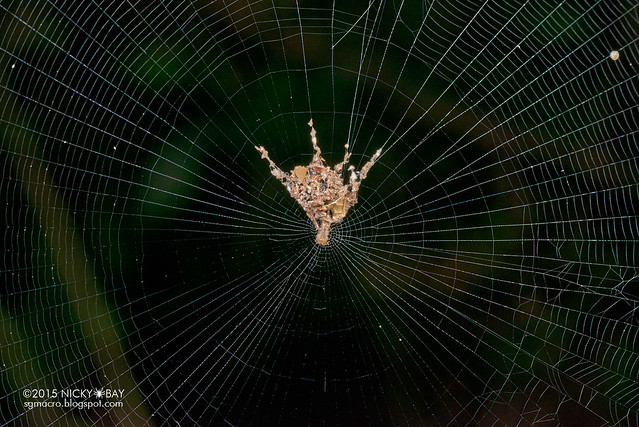
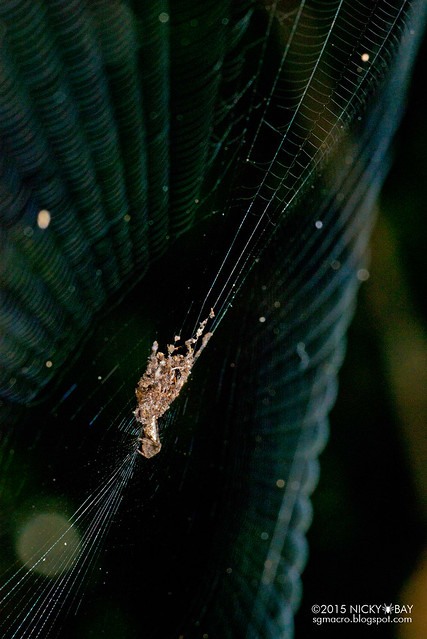


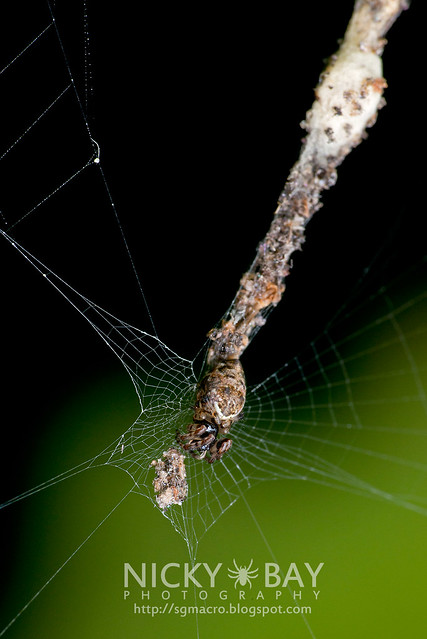
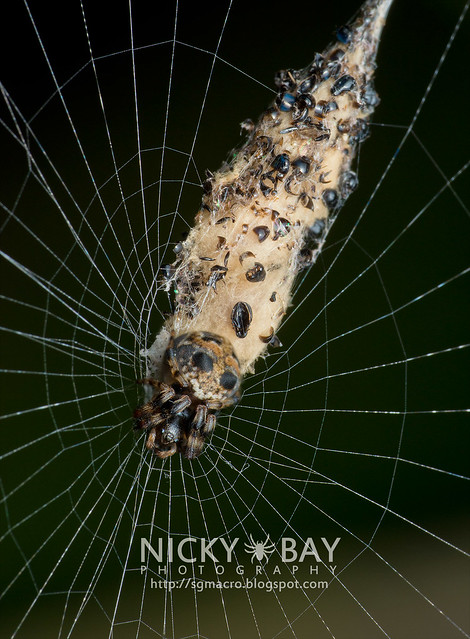
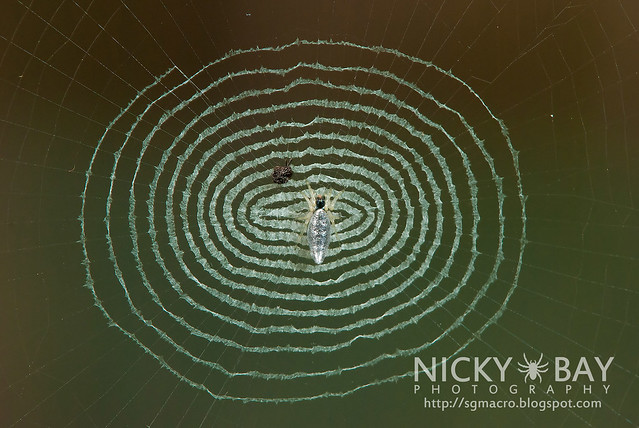

The complete album for this field trip can be viewed on Flickr.
You can also view more photos of spiders from the genus Cyclosa here.
Looking for more? Check the 2014 Macro Photography Highlights for the entire year’s significant findings!


















